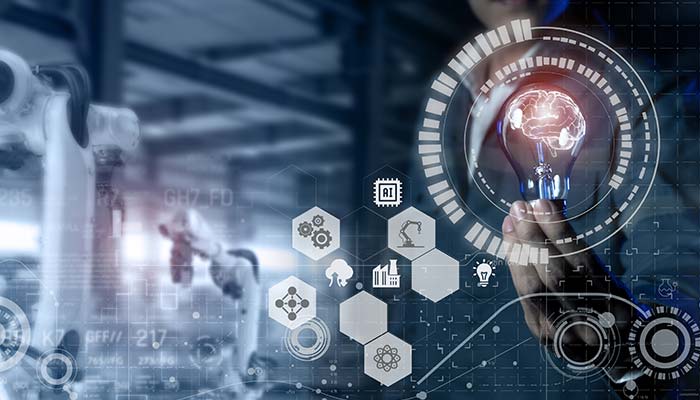News and Events
The robotics industry is constantly changing and evolving. New robotics technologies and developments in automation are quickly creating exciting career opportunities at every education level – from micro-credentials to PhDs. Here is where you can learn more about robotics careers in manufacturing and how these new technologies are benefiting workers


NEWS
The Applications of Artificial Intelligence in Robotics
December 22, 2022Artificial intelligence has come a long way. For example, your cell phone is using it every day to understand your voice commands. Similarly, AI is being used in robotics to create machines that are intelligent and able to respond naturally to their environment. This is a big deal for industries that are increasingly reliant on robotics to do things like manufacturing, agriculture, and healthcare.
Below, we'll take a look at some of the ways in which AI is changing the game when it comes to robotics, especially in manufacturing applications.
AI and Machine Vision in Manufacturing
AI and machine vision are the key ingredients in enabling robots to recognize, analyze, and respond to their environment. Machine vision uses cameras and other sensors to collect data about the environment which is then analyzed by AI algorithms. This enables robots to identify objects, distinguish between them, and make decisions based on what they see.
This capability is especially useful in industrial settings, where robots are responsible for carrying out repetitive tasks such as assembling parts, picking and packing products, and welding components. It can also be used to inspect surfaces for defects or to sort items into categories.
AI-Controlled Collaborative Robotics
Collaborative robotics takes the concept of robot automation to a new level. Instead of robots working independently, collaborative robots (or "cobots") work alongside humans in an environment where safety is paramount.
Cobots are equipped with AI algorithms that enable them to understand their environment and react accordingly. This means they can identify obstacles or changes in their path, adjust the speed and force of their movements, and interact with humans safely.
AI-Powered Autonomous Robots
Autonomous robots are able to work independently without human input or control. This is enabled by AI algorithms that enable robots to make decisions in real-time based on the data they collect from their environment.
One example of an autonomous robot is a self-driving car. These cars use AI algorithms to understand the environment around them, including other vehicles and pedestrians. This allows them to navigate their way through traffic and arrive at their destination safely.
In manufacturing, AI-driven robotics is being used to carry out tasks such as inventory management, picking and packing, loading and unloading of materials, assembling parts, and more. By using AI algorithms, these robots can identify objects in their environment, adjust the speed of their movements based on external conditions, and react to unexpected changes.
The Future of AI in Manufacturing
AI is continuing to revolutionize the way robots are used in manufacturing. By implementing artificial intelligence in robotics, we can create smart factories that are capable of producing more complex products faster and with higher precision. We can also reduce costs, decrease downtime, and improve safety by using robots to automate repetitive tasks.
In the near future, we can expect to see more artificial intelligence in robots taking up a wide variety of roles in manufacturing. From autonomous robots that can carry out complex tasks autonomously to collaborative robots that can work side-by-side with humans, AI is sure to be at the forefront of robotics for years to come.
Can You Get a Job in Robotics With Training in AI?
Yes, you can definitely get a robotics job with training in AI. AI is increasingly being used to power the robots that are used for manufacturing and other industrial robotics applications. In order to work in this field, it's important to have a solid understanding of both AI and robotics, as well as the ability to program and design robotic systems.
In addition to a degree in computer science or AI, knowledge of engineering, physics, mathematics and machine learning can also be beneficial. Having practical experience with robots is also an advantage, as it gives you the opportunity to apply your skills to real-world scenarios. With the right training and education, there are plenty of exciting opportunities in robotics and AI.
Find Training and Education in AI and Robotics at RoboticsCareer.org
If you’re considering getting into AI or robotics, then you’re going to need the right training and education. Lucky for you, we did the hard part and created a database of all the best robotics and robotics-adjacent programs around the country.
Just head on over to the RoboticsCareer.org homepage and use the search tool at the top to find the perfect robotics program for you. For example, try searching for "Artificial Intelligence," then filter the results to match your preferred location, program format, and more.
You will also notice the Endorsed Programs which appear at the top of the results. These represent the programs that have been thoroughly vetted by robotics experts and proven to provide all the necessary and relevant training for the robotics career pathways. You can see a full list of endorsed programs at Endorsed programs.


